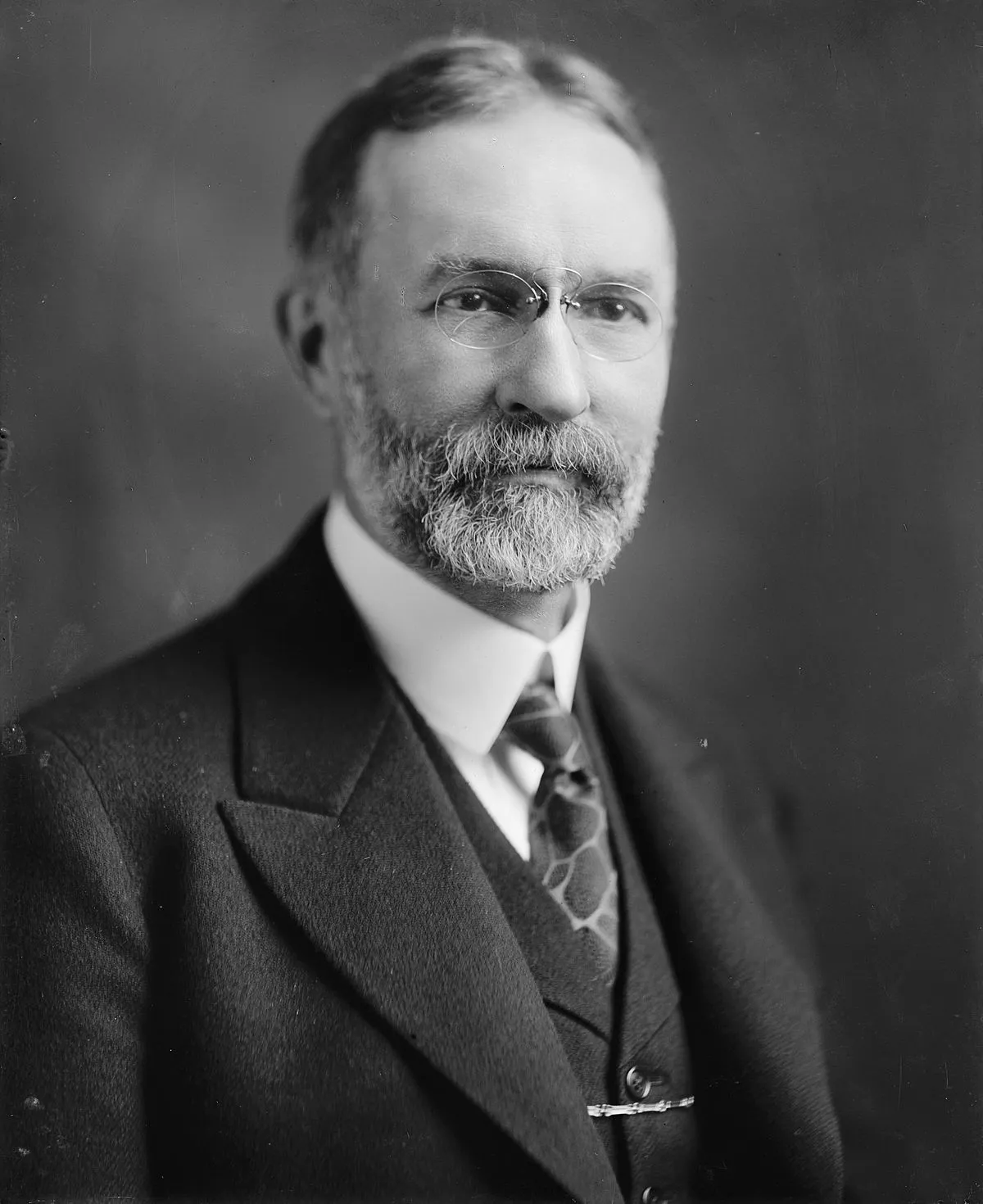 1.
1. George Alexander Sutherland was a British-born American jurist and politician.

 1.
1. George Alexander Sutherland was a British-born American jurist and politician.
George Sutherland served as an associate justice of the US Supreme Court between 1922 and 1938.
George Sutherland won election to the United States House of Representatives in 1900 and to the United States Senate in 1905.
In Congress, George Sutherland supported several progressive policies but generally aligned with the party's conservative wing.
George Sutherland won re-election in 1911 but was defeated in the 1916 election by Democrat William H King.
George Sutherland made up part of the "Four Horsemen", a group of conservative justices that often voted to strike down New Deal legislation.
George Sutherland retired from the Supreme Court in 1938, and was succeeded by Stanley Forman Reed.
At the age of 12, the need to help his family financially forced George Sutherland to leave school and take a job, first as a clerk in a clothing store and then as an agent of the Wells Fargo Company.
However, George Sutherland aspired to a higher education, and in 1879, he had saved enough to attend Brigham Young Academy.
In 1886, they dissolved their partnership and Sutherland formed a new one with Samuel R Thurman, a future chief justice of the Utah Supreme Court.
In 1900, George Sutherland received the Republican nomination as the party's candidate for Utah's seat in the United States House of Representatives.
George Sutherland went on to serve as a Representative in the 57th Congress, where he fought to maintain the tariff on sugar and was active in both Indian affairs and legislation addressing the irrigation of arid lands.
George Sutherland declined to run for a second term and returned to Utah to campaign for election to the United States Senate.
George Sutherland repaid his debt to Smoot in 1907 by speaking on the floor in the Senate in defense of the senior senator during the climax of the Smoot hearings.
George Sutherland voted for much of Theodore Roosevelt's legislative agenda, including the Pure Food and Drug Act, the Hepburn Act, and the Federal Employers Liability Act.
George Sutherland was involved closely with the legal codification of the period and joined Taft in opposing the legislation admitting New Mexico and Arizona into the union because of clauses within their constitutions allowing for the recall of judges.
George Sutherland's opposition contributed to his defeat in 1916, when he faced re-election for the first time under the terms of the Seventeenth Amendment.
On September 5,1922, Sutherland was nominated by President Warren G Harding as an associate justice on the Supreme Court of the United States to succeed John Hessin Clarke; he was confirmed by the US Senate the same day.
George Sutherland was regarded as the leader of this conservative bloc of judges.
Important decisions authored by Sutherland include the 1932 case Powell v Alabama, overturning a conviction in the Scottsboro Boys Case because the defendant, Ozie Powell, was deprived of his right to counsel, and US v Curtiss-Wright Export Corp.
In United States v Bhagat Singh Thind, Sutherland authored the unanimous decision, which decided that Indian Sikhs, although they are classified as members of the "Caucasian race," were not white within the meaning of the Naturalization Act of 1790 and so are ineligible for naturalized American citizenship.
George Sutherland retired from the Supreme Court on January 17,1938, as the balance of power on the Court was shifting away from him.
George Sutherland was interred at Abbey Mausoleum in Arlington County, Virginia.
George Sutherland was never a member of The Church of Jesus Christ of Latter-day Saints, as his parents left the Church in his childhood.
George Sutherland rejected the Latter-day Saint tradition, specifically "collectivist economic practices," but he had studied the religion at Brigham Young Academy and followed the Latter-day Saint practice of alcohol abstinence.
Lawyer and commentator Jay Sekulow wrote that some of George Sutherland's views had been influenced by the Latter-day Saints.